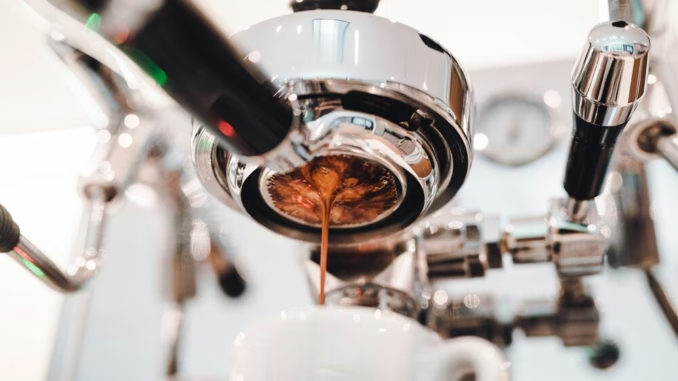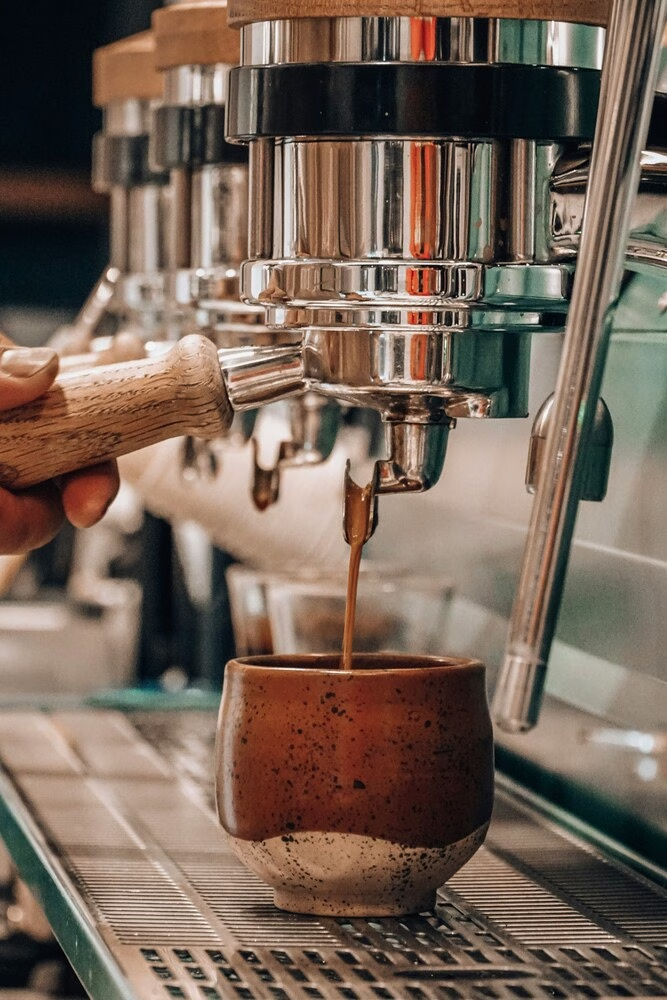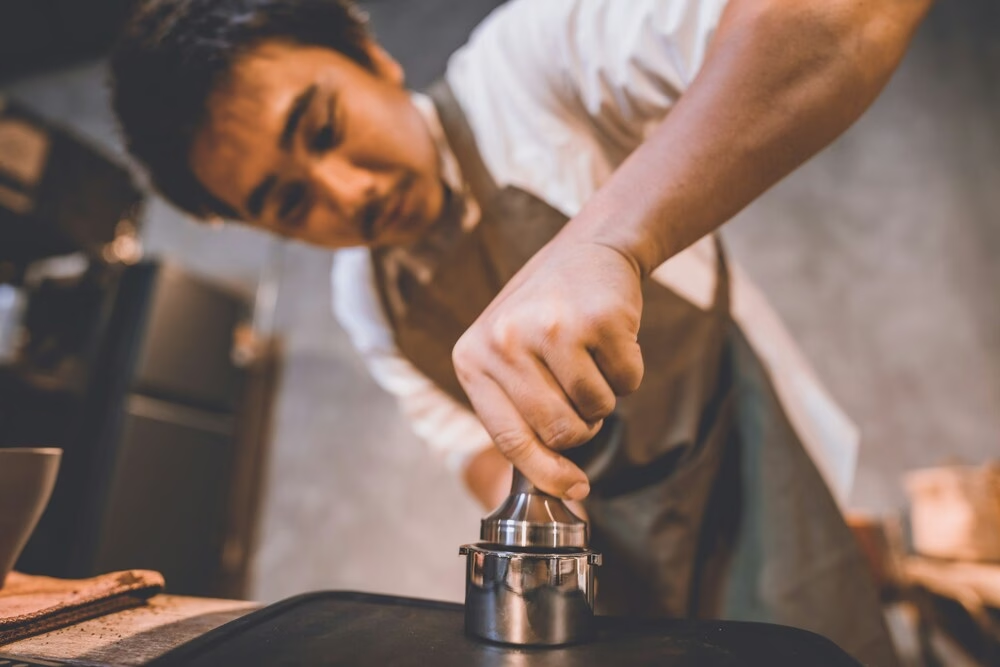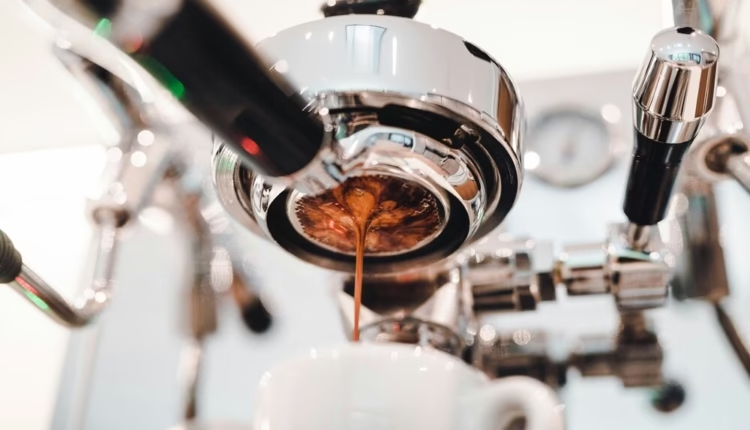Why the First Few Seconds of an Espresso Shot Are Arguably the Most Important

Researchers in Switzerland reveals the physics behind an espresso shot—and how the first few moments of a pull can make all the difference.
BY BHAVI PATEL
BARISTA MAGAZINE ONLINE
Featured photo by Charles Sims
Understanding coffee’s physical structure has been like trying to describe a symphony by analyzing individual notes—until now. A groundbreaking study by researchers from the University of Fribourg and the ZHAW Zurich University of Applied Sciences reveals that espresso is far more complex than anyone imagined, existing as an intricate colloidal system where oil droplets, polymers, and proteins dance together to create the sensory experience we cherish.
One key point that the study confirms is that the first few milliliters of an espresso shot make up the majority of its flavor and texture: something that many of you may already know—but today, we explore the findings of the study that prove why this point is true.
The Hidden World Inside Your Cup


According to the study, “An espresso is a complex multiphase system containing dispersed solids, polymers, oil droplets, and a considerable amount of gas in the crema.” An espresso shot is not just coffee; it is an engineering marvel happening in real-time during extraction.
A regular espresso has a total solid concentration of approximately 50 mg/mL. Compared to other extraction methods, espresso, particularly if brewed from Arabica coffee, also has an extraordinarily high lipid content of 1.2-2.5 mg/mL.
Using advanced imaging techniques, including confocal laser scanning microscopy and small-angle X-ray scattering, researchers discovered that espresso contains submicron oil droplets stabilized by protein-polysaccharide complexes. These microscopic structures, mostly under 350 nanometers in size, are what carry those precious lipophilic (oil-loving, hence, oil-soluble) flavor compounds to your palate.
The study finds that these oil droplets are stabilized by protein-based structures that form protective layers around each droplet, preventing them from merging and maintaining espresso’s characteristic texture. Think of it as thousands of tiny flavor packages, each wrapped in its own protective coating.
The First Shot Matters Most


Here is where things get fascinating for professionals pulling shots: Timing is everything. The research analyzed espresso in three fractions—early, mid, and late—revealing dramatic differences in structure.
The researchers found that mostly the first fraction of the espresso contributes to the ‘body’ of espresso due to its highest concentration of dispersed colloids and the early extraction of unfolded polymers. The study finds, “The size of the extracted oil droplets steadily decreases from the early to the later fractions, likely because smaller oil droplets are subjected to more surface interactions and elute more slowly from the porous coffee bed”.
That initial portion is not just stronger—it is structurally different, containing longer, unfolded polymer chains that create viscosity and mouthfeel.
Polymers: The Unsung Heroes
The researchers identified rigid, fiber-like polymer structures—arabinogalactans and galactomannans extracted from coffee cell walls—measuring approximately 40 nanometers in length with a radius of just 0.6 nanometers. These molecular scaffolds create entanglements with oil droplets and unfolded chains, building the three-dimensional structure that gives espresso its body.
The study notes that melanoidins, those complex compounds formed as a result of the Maillard reaction during roasting, play a dual role: stabilizing both the liquid emulsion and the crema foam. They are essentially molecular multitaskers, reducing interfacial tension while providing electrostatic stabilization. These polymer and emulsion structures are vital for the mouthfeel and flavor release properties of the espresso.
Practical Implications for Coffee Professionals



This research holds the potential to revolutionize our understanding of espresso extraction. The study confirms that smaller oil droplets elute later due to increased surface interactions with the coffee puck. This means grind size, pressure, and flow rate are not just affecting extraction yield—they are determining the physical architecture of your beverage.
The negative charge on espresso colloids (approximately -30 mV at normal brewing pH) provides electrostatic repulsion, preventing aggregation. When the study adjusted the pH to 2, the coffee became cloudy, resembling the appearance of coffee containing milk, proving that charge stabilization is critical.
For baristas focused on consistency and quality, this research confirms what many have intuited: Those first precious milliliters contain the concentrated essence of espresso’s texture and complexity—a liquid achievement of nanoscale engineering.
ABOUT THE AUTHOR
Bhavi Patel is a food writer focusing on coffee and tea, and a brand-building specialist with a background in dairy technology and an interest in culinary history and sensory perception of food.
Subscribe and More!
As always, you can read Barista Magazine in paper by subscribing or ordering an issue.
Read the October + November 2025 Issue for free with our digital edition.
For free access to more than five years’ worth of issues, visit our digital edition archives here.
Source: Barista Magazine



